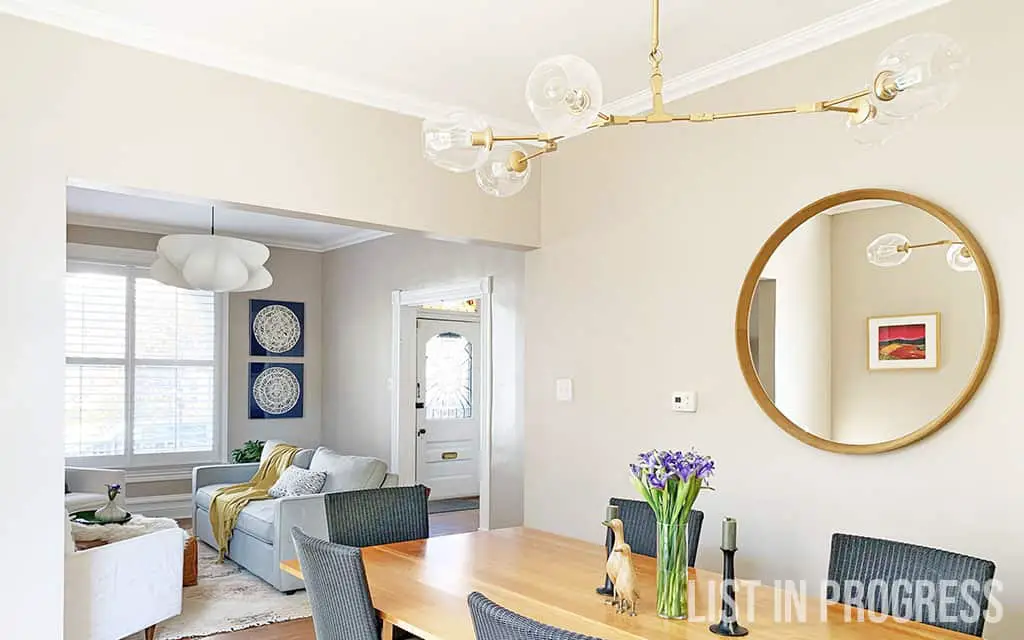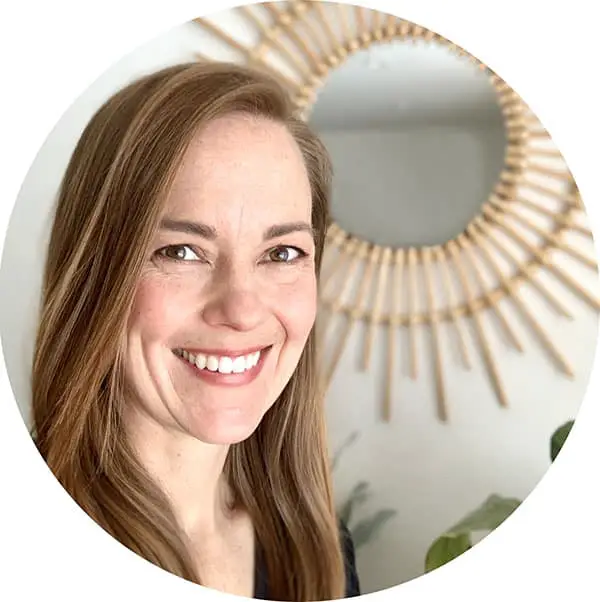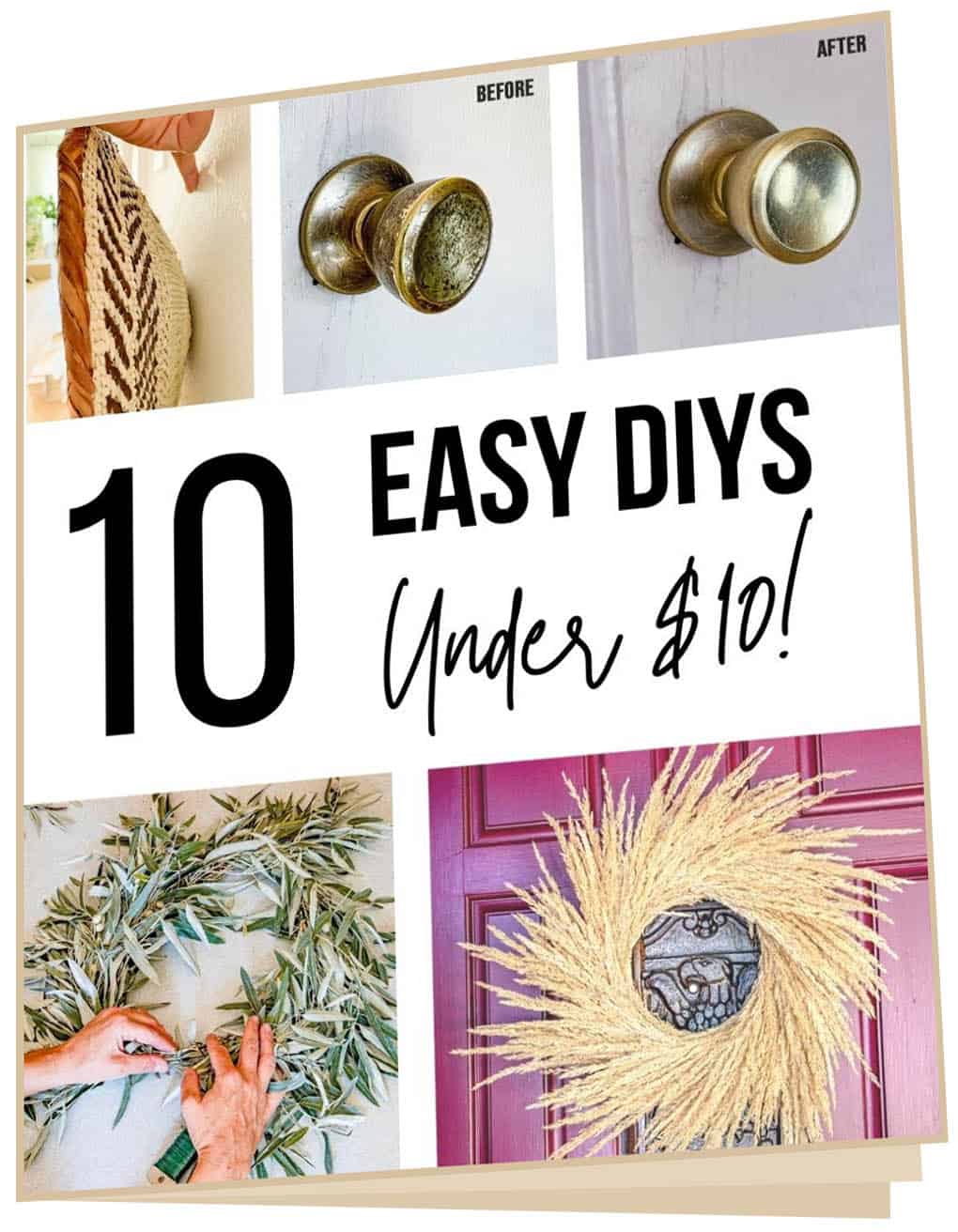Here’s how to choose light fixtures for your home that will create a pleasant, inviting, and well-lit space for all. If you find lighting to be a challenge, you’re not alone! Let’s change that. This article covers types of lighting to consider, the best light placement in various rooms, and which light fixtures to avoid.
Overview: How to Choose Light Fixtures
In order to choose light fixtures, you’ll need to think about these factors:
- types of light sources in the room
- amount of light from each source (number of bulbs, wattage…)
- preferred lighting temperature
Once you have a lighting plan, including the location and amount of light from each fixture and the desired color temperatures, you can focus on choosing new lighting sources. What does all of this mean? Here are resources to help you navigate the world of home lighting.
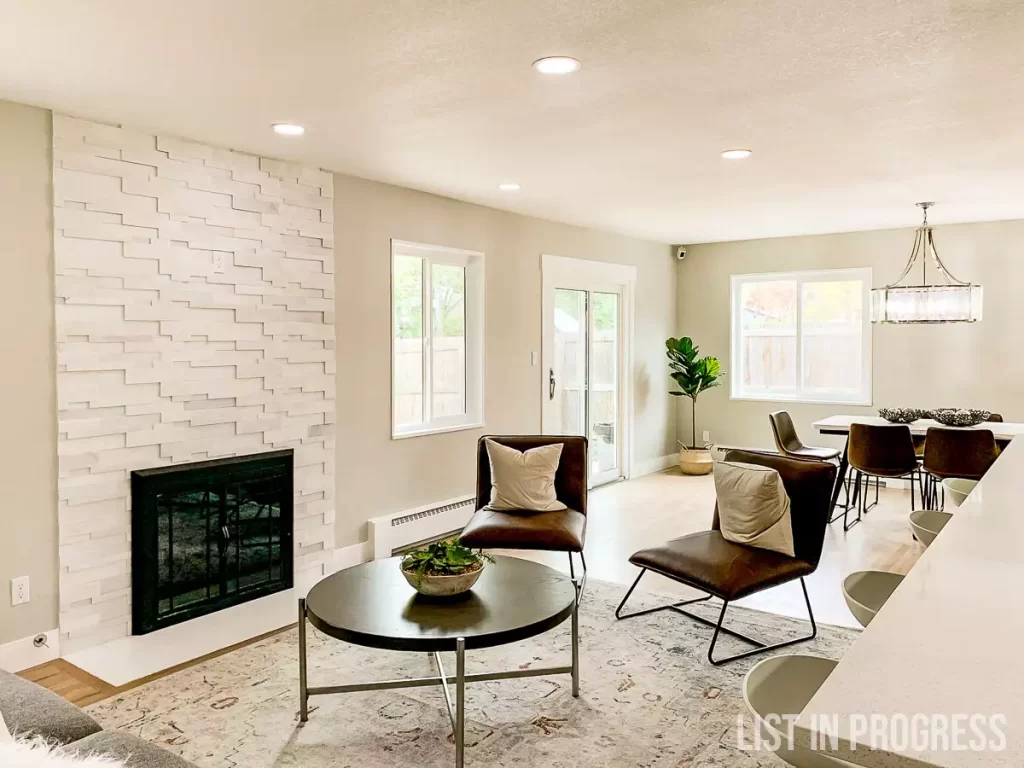
Plan for Layered Light Sources
The most important factor in choosing lighting is to first ensure your rooms have a variety of light sources. Consider where the light comes from in each space and layer the location and types of lights. That includes ambient (windows plus overhead), accent, and task lighting.
- Ambient – main light source, usually overhead flush/semi-flush mount, chandelier, recessed lighting
- Accent – often decorative like pendants, table lamps, standing lamps
- Task – most specific such as sconces, desk lamps, small area lighting
Here’s a kitchen with all three:
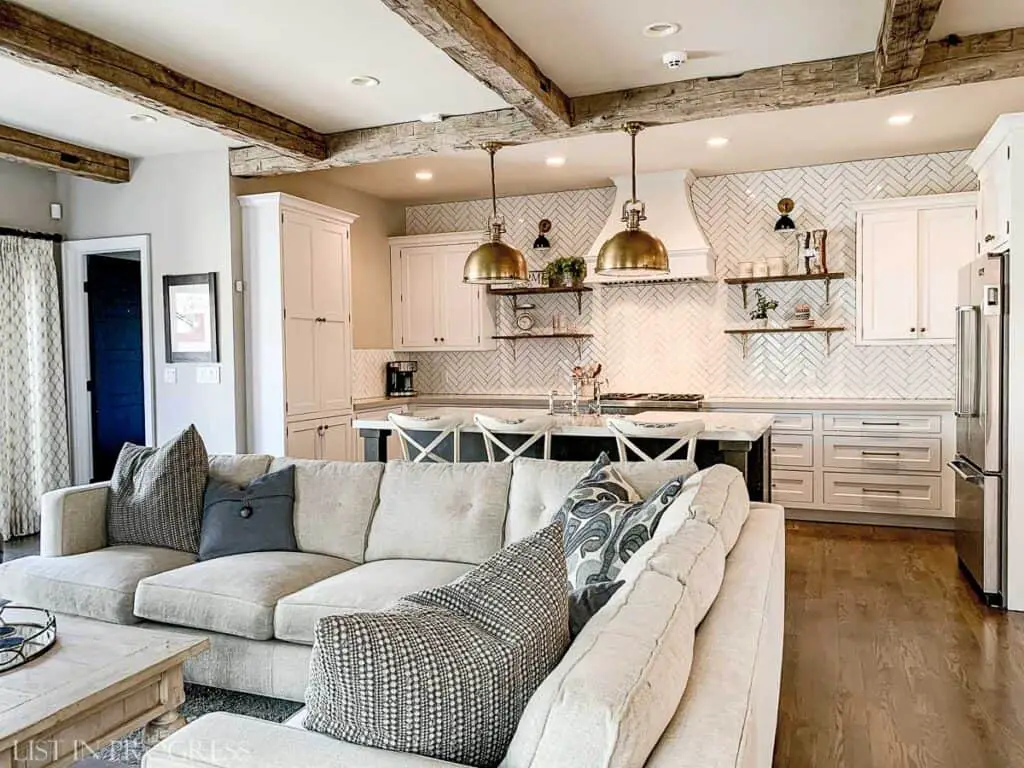
Start With Windows
If your space has south-facing windows, you won’t need to add as much light as you might in a darker, north-facing room. The purpose of the room determines the amount of light needed; kitchens and bathrooms typically need stronger light sources than bedrooms and living rooms.
Our last house had a large south-facing bay window in the living room. The lights are all turned on for staging photos, but we rarely used them during the daytime in this room.
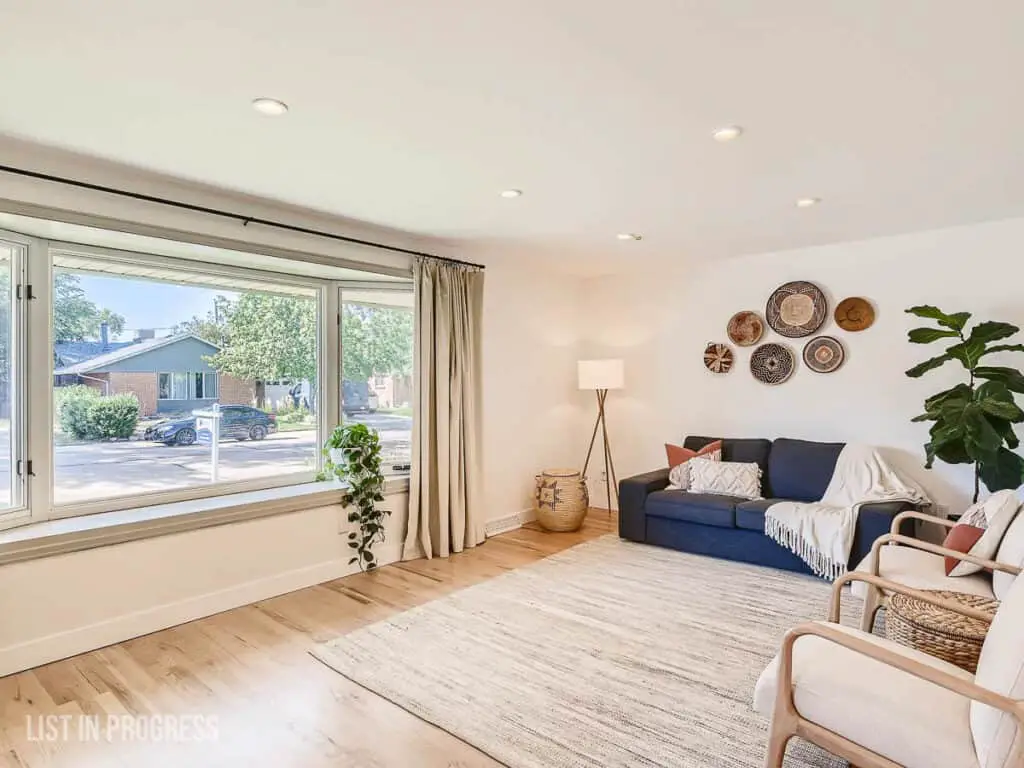
Add Lights for Room Purpose
Layered lighting from a variety of sources makes a space feel more balanced and comfortable. Just picture the stark light in a room with eight recessed can lights in the ceiling. In a kitchen, that’s great, but in a family room, it might be too intense. By adding a couple of table lamps and throwing the recessed lights on a dimmer, the space would feel much cozier.
In the photo below, the room is flooded with natural light, so they’ve only turned on one lamp for afternoon ambiance.
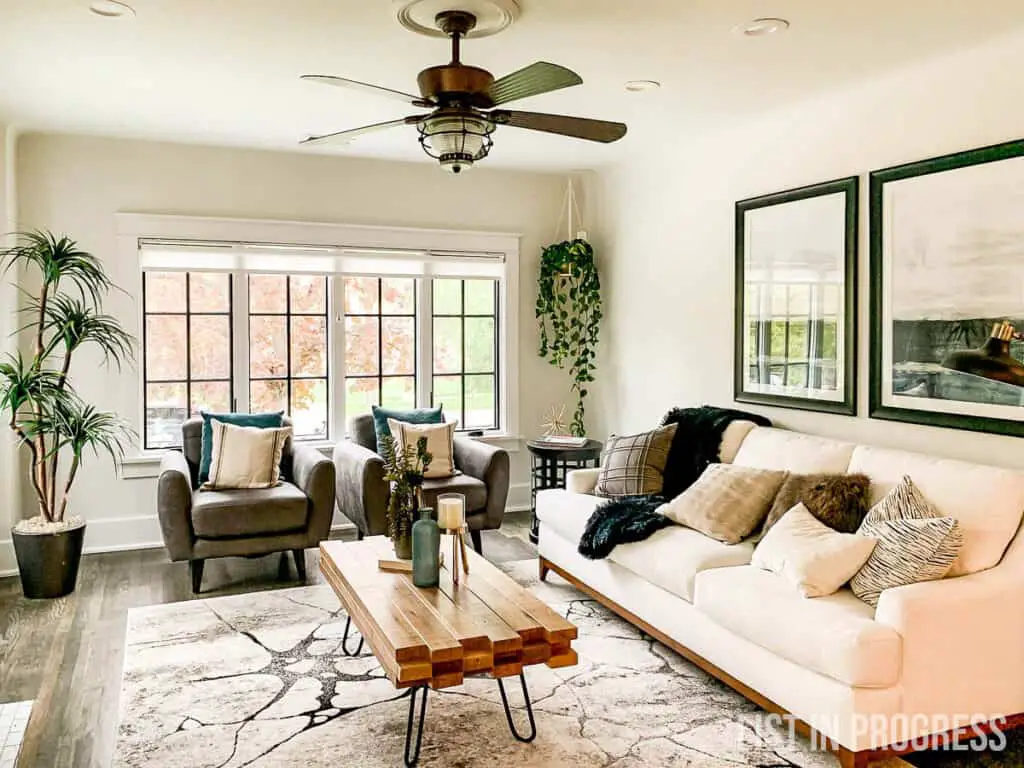
Task lighting spotlights features like artwork, stairs, and desks, and unique light fixtures can also add personality to your space. Task lights can also balance the elements of a room if they highlight details on a quiet wall or in a dark corner.
In the photo below, look for the under-cabinet lighting, which brightens a narrow galley kitchen.
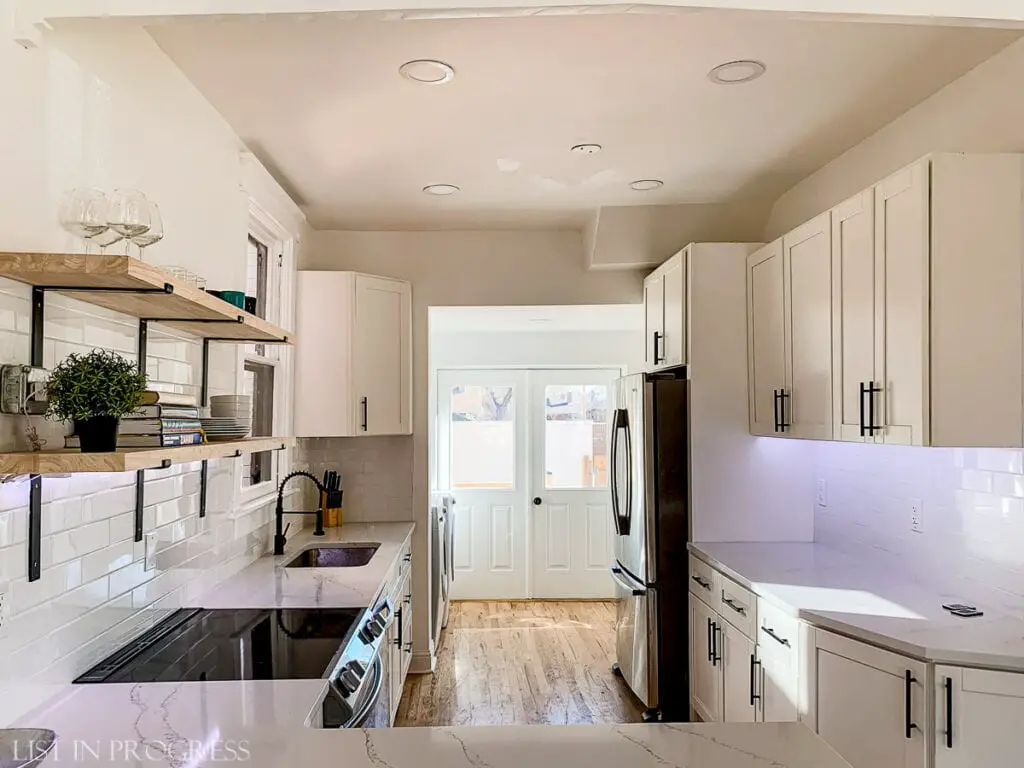
Choosing the Right Overhead Fixtures
My main message here is this: buy a fixture that will be bright enough. Over the past few years, there has been a trend of pendants and flush mount lights with only one single bulb. This is driving me to distraction. (I’ve been watching Bridgerton – can you tell?) One bulb is not enough for an entire room. Unless you’re in a tiny closet.
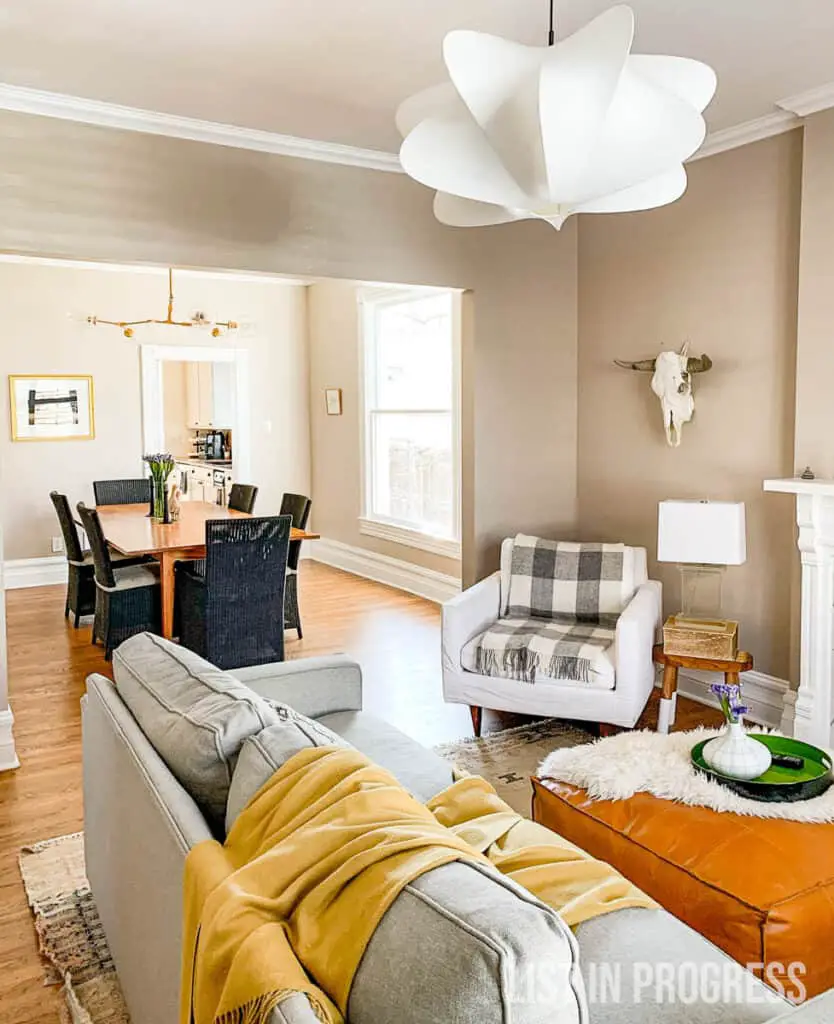
Bedrooms and Offices
Overhead light fixtures for bedrooms, offices and smaller single-use rooms really need to have 3+ bulbs or the equivalent light output. A single fixture with two bulbs will probably still feel too dim.
I have featured these bedrooms in previous blog posts because I love the staging design. However, those single-bulb ceiling lights are the perfect example of what not to do as the main overhead light in a bedroom!
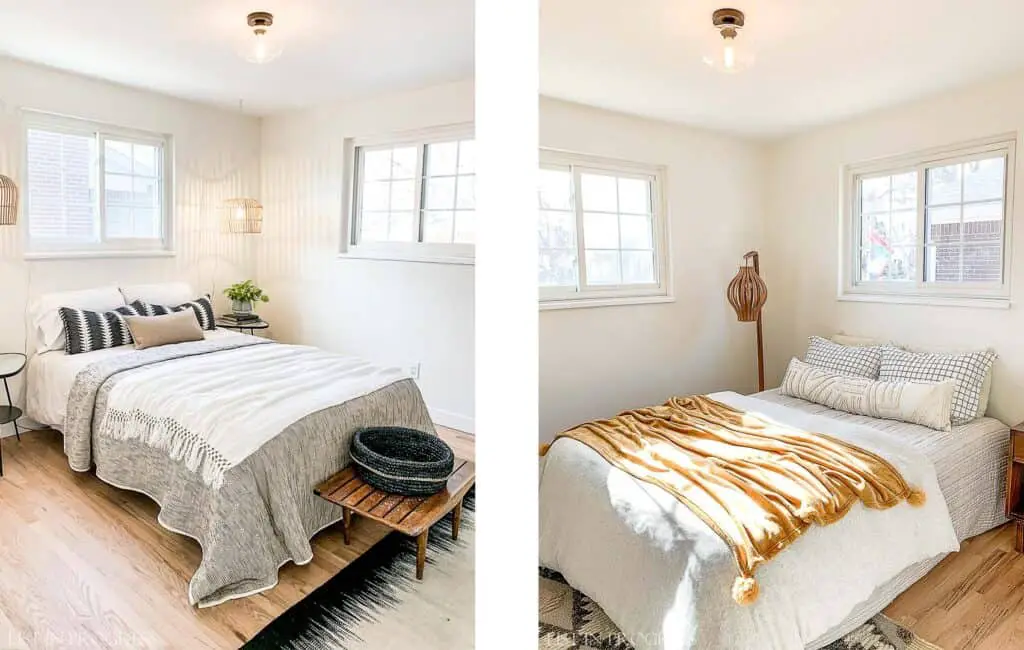

Even with an adequate 3+ bulb fixture, you might be surprised by the amount of light you wish for in a particular space.
We just installed this light as a trial in our kitchen, where we need to replace two old 1980s fluorescent light boxes on our ceiling. I bought two of these flush mounts, and each fixture has 3 bulbs – but it’s still too dim! I want to try it in a bedroom next to see if it works there.

Dining Rooms
If you’re researching overhead lighting for a dining room, you might be looking at chandeliers. Generally, if the fixture has 6+ bulbs, you’ll probably find the light sufficient for a dining room. That’s assuming the fixture will cast light around the entire space, and light coming from an adjacent kitchen will help, too.
Unless you have adequate light from another room nearby, it’s hard to imagine single-bulb pendants would ever work in a dining room. Although it’s a nice design, I’m curious to know if the fixture below really offers enough light.
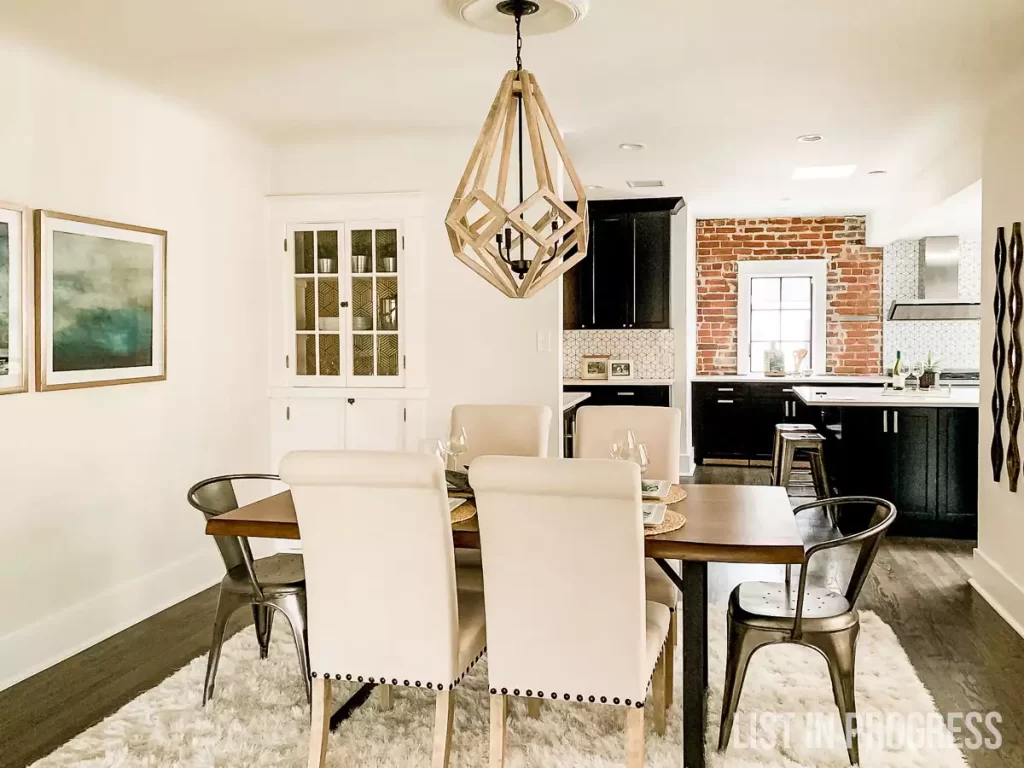
We just bought this fun chandelier to try in our dining room. I love it! It reminds me of a dandelion (but that could be because I just updated this post on Non-Toxic Weed Killers).
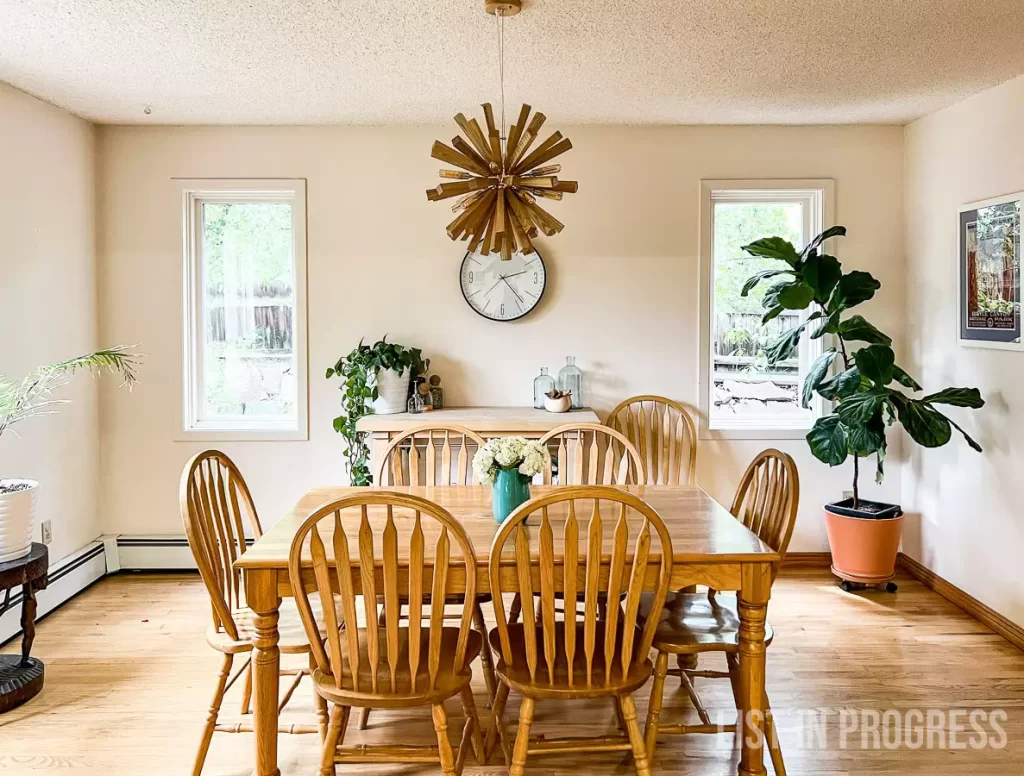
This light fixture has 10 bulbs, which should be fairly bright, but the wooden pieces break up the amount of light cast from the overall fixture. It still feels bright enough with 40-watt equivalent LED bulbs.
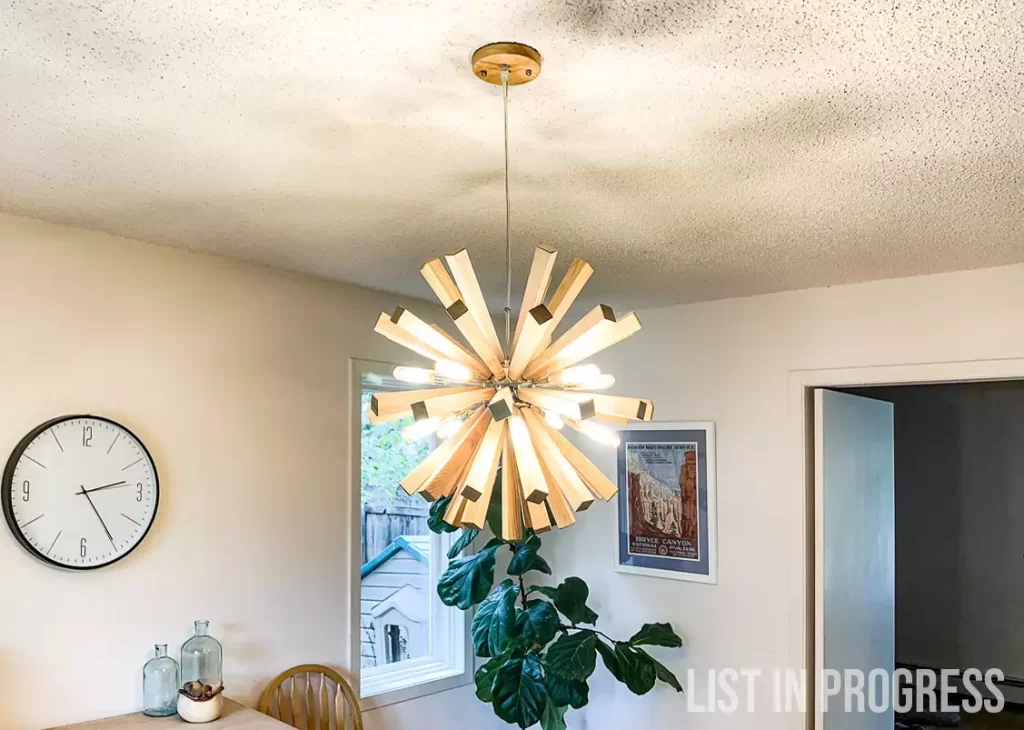
By the way, I bought that light fixture from Wayfair, but please know that it’s cheaply made. We are slightly concerned about the weight and wooden mounting plate cover. I don’t want to recommend it without that word of caution.
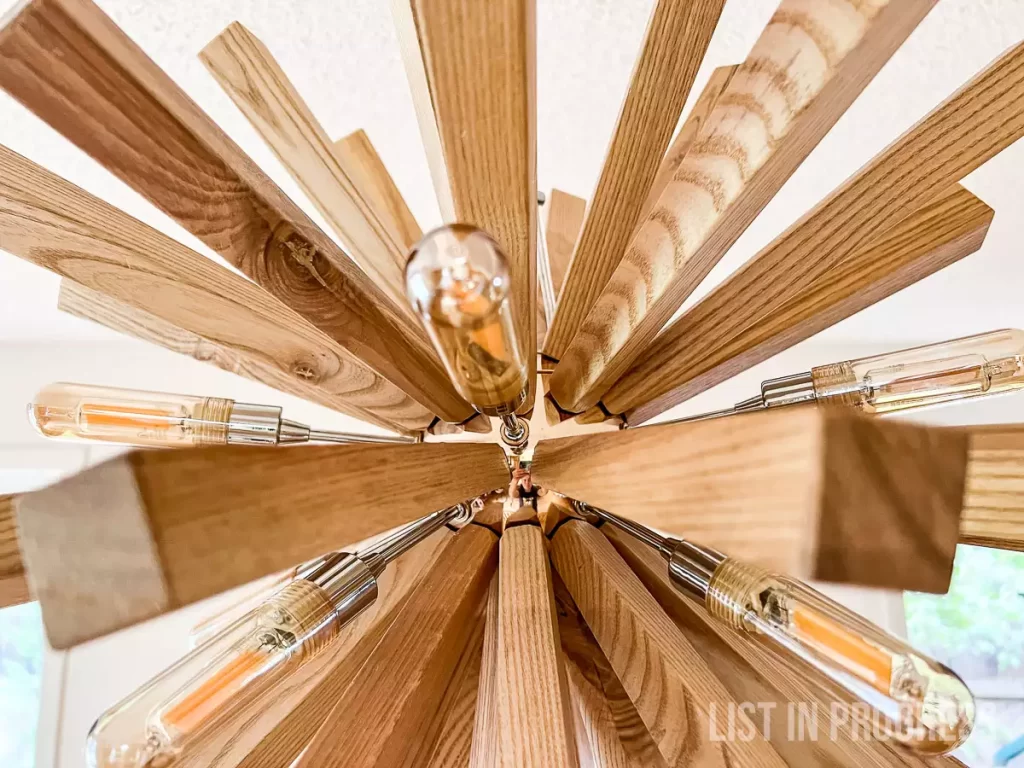
Living and Family Rooms
These rooms are the perfect location for a blend of recessed can lights or large flush mounts and accent lighting such as table lamps. If you can install dimmers on your overhead lights, that’s even better for spaces where you’ll transition from day to evening.
Many older homes were built without overhead light fixtures in the living room. In that case, the light must come from windows and accent lighting, so standing lamps are a good solution if table lamps alone are too dim.
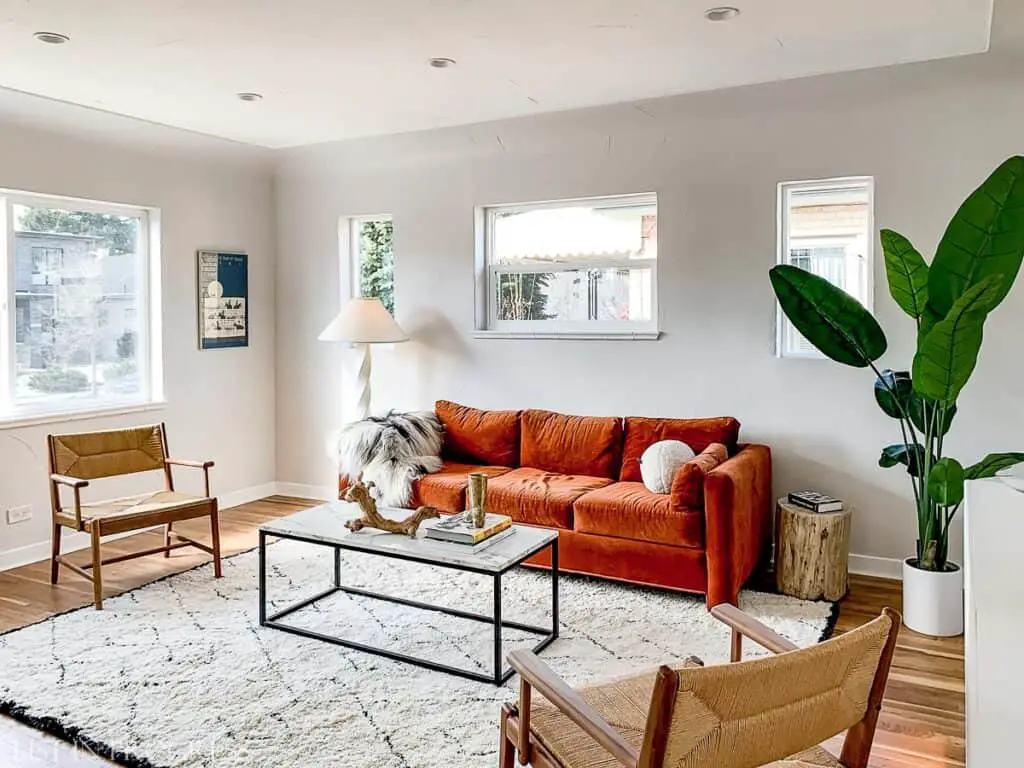
You Might Also Like:
2023 Ceiling Light Trends
61 Modern Flush Mount Lights from Amazon
24 Outdoor Ceiling Lights Under $120
Designer Lighting Dupes: Get the Look for Less
How to Light Bathrooms
Many bathrooms have a combination of both overhead and vanity lighting, although you can also get away with just good vanity lighting in small bathrooms. Overhead lights are helpful but vanity lighting is crucial for anyone who gets ready in front of the bathroom mirror.
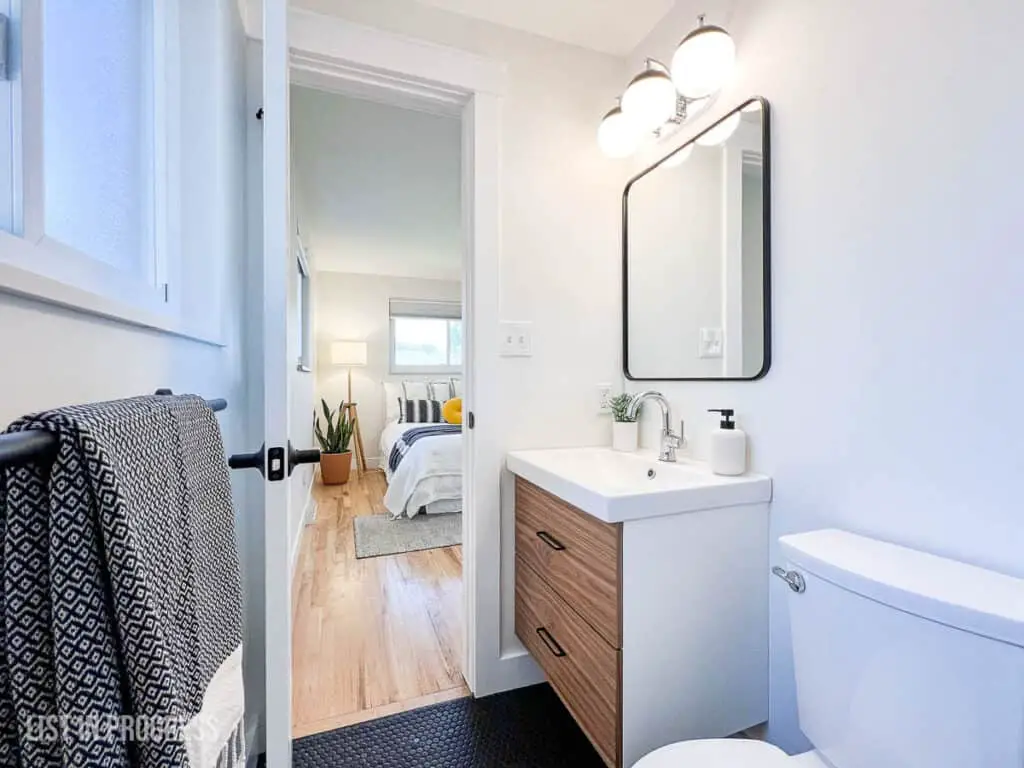
Speaking of vanity lights, here’s where fixture position really comes into play. Don’t choose a fixture that casts light down, because it will create shadows on your face. It’s better to install vanity lighting above or on the sides of the mirror that emits light evenly. Fixtures with white shades are a good choice for this purpose, rather than metal sconces that point light in one direction.
Here’s an example of what not to do. These bare bulbs are right at eye level, which would be uncomfortable for anyone putting on makeup.
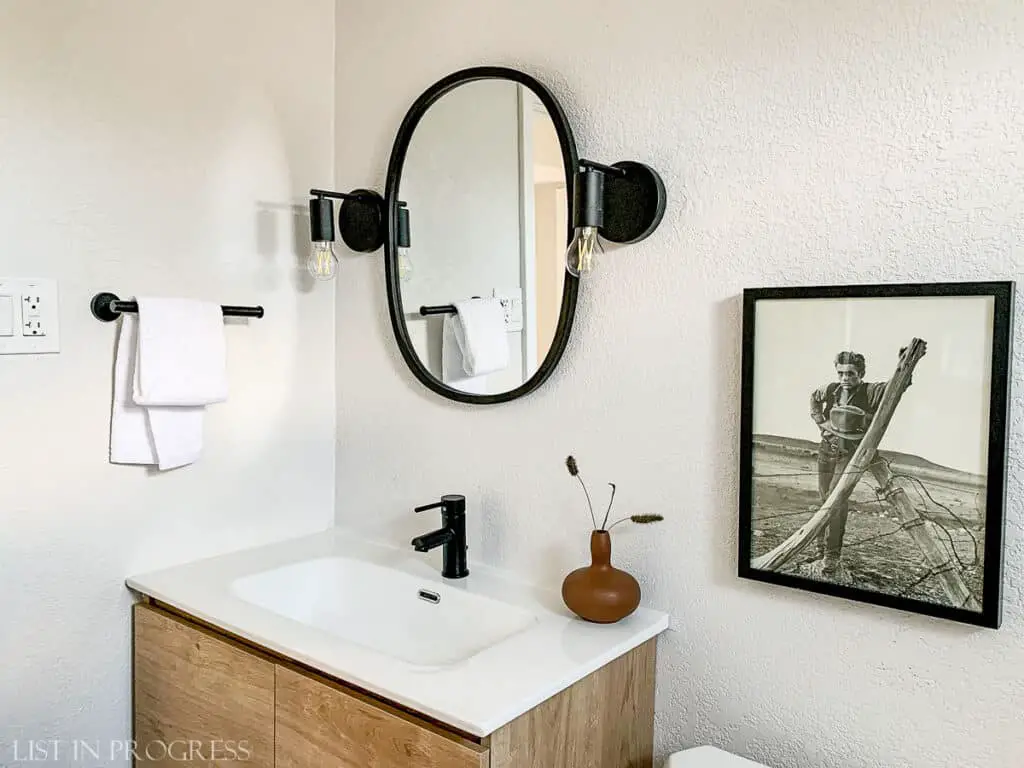
How to Light Kitchens
Kitchens usually have multiple light sources and are often the brightest room in the house. Good overhead room lighting is key, because pendants and single kitchen sink lights are supplemental and decorative. Unless you have multiples and light emitted is truly bright enough, pendants are best when paired with additional ambient lighting. Here’s a great example:
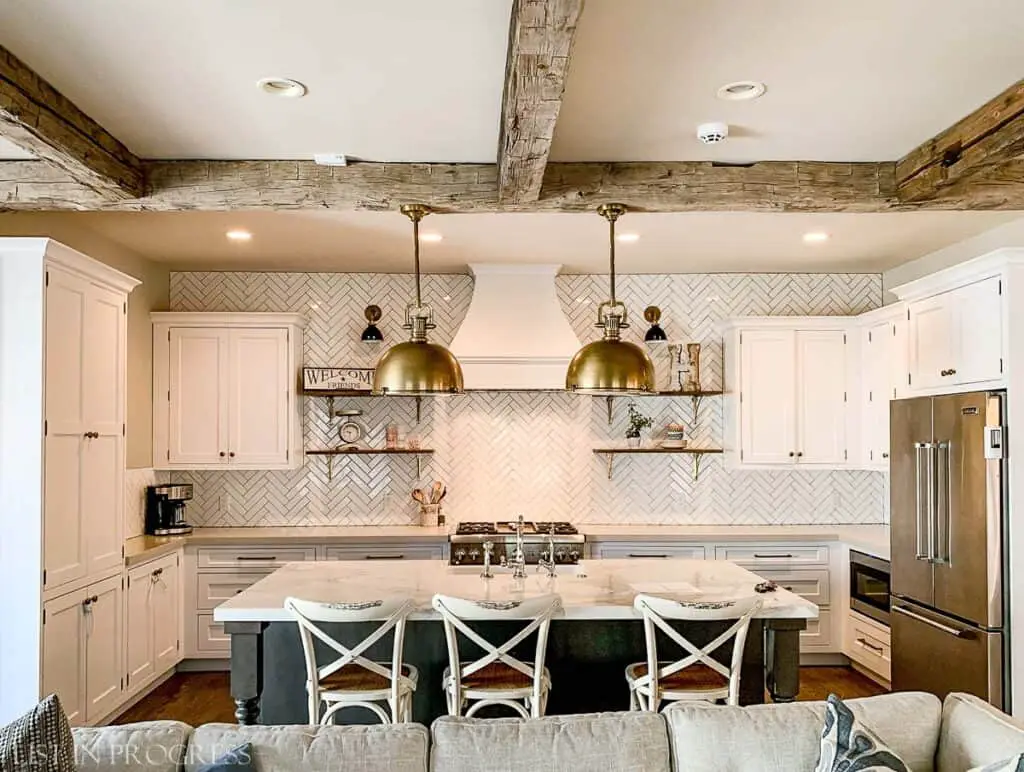
Here’s how to choose light fixtures for a kitchen. Start with the biggest lighting source and plan for it to light the entire space. That means, install an adequate fixture for that main location. Then choose accents that coordinate with the style of that fixture.
Eventually, we might install recessed lighting in our kitchen, which is my personal preference. I love a brightly-lit workspace. Designers don’t always love recessed lighting because it’s a bit industrial and stark, but I’d argue that utility overrides design when it comes to lighting a kitchen. What do you think?
The latest style of can lights is a flat disc like these, rather than the style that recesses into the ceiling. Definitely buy extra to keep on hand for future replacements, in case your style of light is ever discontinued.

This kitchen had a bit too many recessed lights for my taste, but at least the space is bright! I would love to see a decorative light over the island, to break up the industrial feel of the recessed lights.
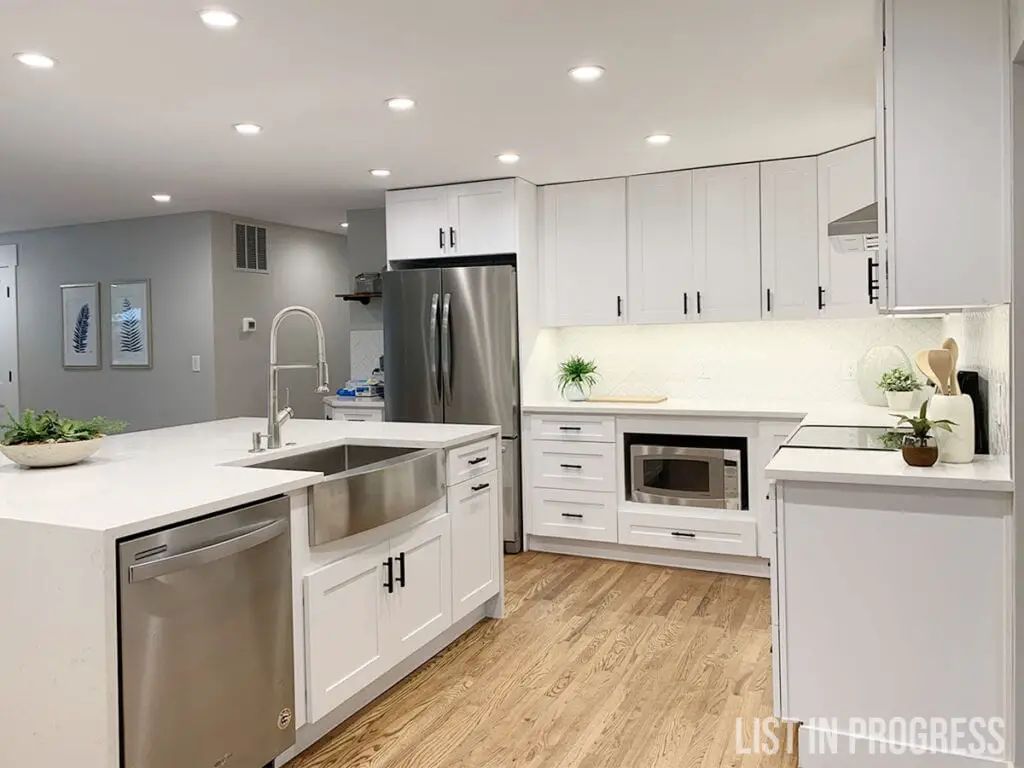
Making Sense of the New Lightbulbs
Raise your hand if you’ve been confused by the evolution of lightbulbs in the last 10-15 years. Out with the old incandescents (the classic light bulb); they use the most energy, which becomes expensive, and they have the shortest lifespans. In with CFLs and LEDs and other mumbo-jumbo, which I explain briefly below. Home Depot offers a good, comprehensive overview of light bulb types.
Most fixtures that require bulbs with a standard E26 base, like the old incandescents, can take either CLFs or LEDs. You’ll need to read the details of your light fixture to know which types of bulbs are the best match.

Know this: because LED and CFL bulbs draw far less energy, you can worry less about matching the wattage to your fixtures. The bulb packaging will explain light equivalency using wattage terms that are familiar to us. So if you’re replacing a 40-watt bulb with an LED, look for one that is labeled 40-watt-equivalent (usually a 6W LED). You can also use a higher-watt equivalent LED bulb, and here’s an explanation of how that works. Be sure to stay under the maximum wattage drawn by the fixture.

LED Bulbs
The newest and arguably best type of light bulb is an LED. These bulbs use substantially less electricity and can potentially last for 20+ years. For that reason, they are not cheap. They come in many variations, from white to Edison styles.

These LEDs are color-changing and compatible with Alexa and Google Home, so you can give voice commands, set timers, and control them through your mobile device. How great is that? Maybe next year, they’ll cook dinner, too.

My thoughts: LEDs have room for improvement. The concept is fantastic, but the quality isn’t there yet. I have bought and witnessed the short lifespan of many LED light bulbs in recent years. I’m not convinced they will last 20 years – yet. We’ve also noticed that the advertising has changed from a 30-year to a 20-year lifespan. Hmmm.
CFL Bulbs
Not long ago, CFLs, or compact fluorescent light bulbs, were a revolution in lighting. They are more expensive than incandescent bulbs but use far less energy. CFLs don’t have the lifespan of LEDs, which is why they’ve been eclipsed in the energy-efficient field of light bulbs.

Halogen, Fluorescent, and Incandescent
The other types of bulbs on the market are halogen, fluorescent, and incandescent.
Halogens can be nice for specific purposes, such as outdoor flood lights, but their lifespan is about one year.
Fluorescents can be great in utility rooms since they are bright and energy-efficient.
Incandescent bulbs are on the way out. It’s time to use up your stockpile and invest in LEDs or CFLs moving forward.
What About Integrated LED Lights?
The trendiest light fixtures on the market have integrated LED bulbs built right in. The idea is that LEDs could last decades, so you might as well just install an integrated fixture… but did you read my comment above? I haven’t seen that magical long-lasting LED bulb yet.
Pro – all-in-one fixture, you don’t need to find and buy the right type of light bulbs separately.
Con – when the light dies, the entire fixture is trash. This is more wasteful and annoying than just replacing a bulb.
I’ve installed a few of these in basement closets and utility rooms – you can’t beat the price!

Understanding Light Temperature
There are three standard light temperatures available in most styles of common bulbs. Here’s an overview of color temperature that doesn’t get too technical. Here are the basics.
Soft white – this is the warmest, yellowest light. Think of a living room table lamp – very cozy.
Bright white – a bit cooler and brighter. This is the color temp I prefer for overhead lighting because it’s neither too yellow nor so stark that I feel like I’m in Costco. It’s a good middle ground, a bright light temperature for indoor overhead lighting at home.
Daylight – the brightest of the bunch. Great for a garage or utility room, anywhere you want the brightest light available for dark spaces.
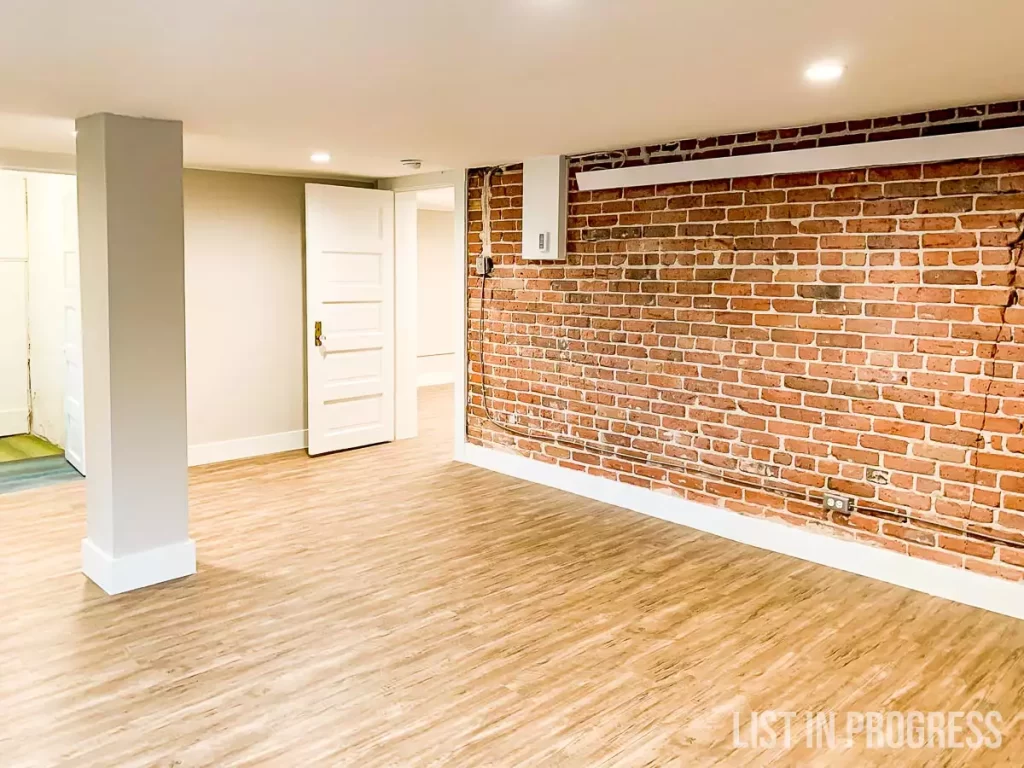
Where to Shop for the Best Style and Deals
I’ve written a few posts on lighting sources. Check out these articles for specific roundups if you’re in the market for ceiling lights, outdoor lighting, or entry lights.
2023 Ceiling Light Trends
61 Modern Flush Mount Lights from Amazon
24 Outdoor Ceiling Lights Under $120
Designer Lighting Dupes: Get the Look for Less
Here are some great sources to check for stylish light fixtures.
Inspiration Sources
- Rejuvenation, Pottery Barn, West Elm (all Williams Sonoma)
- Crate&Barrel and CB2
- Serena & Lily
- Hudson Valley Lighting Group
- Schoolhouse
- Stoffer Home
- Anthropologie, Urban Outfitters
- Etsy
Affordable Retailers
- Amazon
- Wayfair and AllModern (related)
- Shades of Light
- Etsy
- Lamps Plus
- IKEA
- Lumens
- World Market


